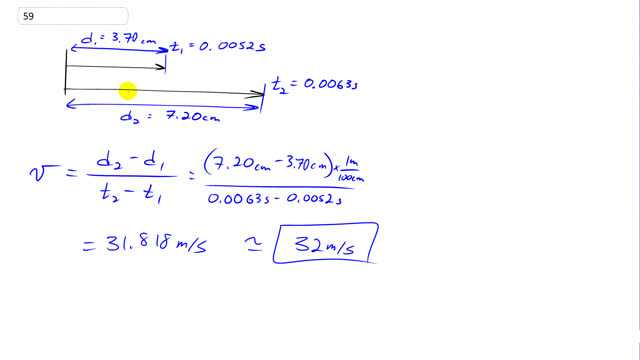
A neuron is stimulated with an electric pulse. The action potential is detected at a point 3.70 cm down the axon 0.0052 s later. When the action potential is detected 7.20 cm from the point of stimulation, the time required is 0.0063 s. What is the speed of the electric pulse along the axon? (Why are two measurements needed instead of only one?)

In order to watch this solution you need to have a subscription.
This is Giancoli Answers with Mr. Dychko. Velocity is change in position divided by a change in time. So the second measurement of this action potential position is 7.20 centimeters from the start at a time of point 0.0063 seconds and then subtract that position from the position measured before 3.7 centimeters and then t one then is 0.0052 seconds. So take that difference in position convert the centimeters into meters by multiplying by one meter for every 100 centimeters and then divide by the change in time 0.0063 seconds minus 0.0052 seconds which gives about 32 meters per second. And the reason you can't just go… This particular one measurement of distance 3.7 centimeters divided by this time of 0.0052 seconds. If you do that division you, you'll find that you get a completely different answer. What is the answer... 3.7 divided by 0.0052, it gives seven meters per second. So and that… that's quite a bit slower than what, what the speed actually is and that makes sense because some of this time is used to develop the action potential. And this isn't necessarily the time that it spends moving. So when the when the stimulation is initially applied to the axon there's a time lag between the application of the stimulation and the creation of the action potential. There's some time for the cell membrane to change its permeability and for ions to move to create this charged distribution that results in the, the action potential. So… So by, by doing things this way with two measurements. This is definitely the time between the ACT… the action potential moving from this position to this position.